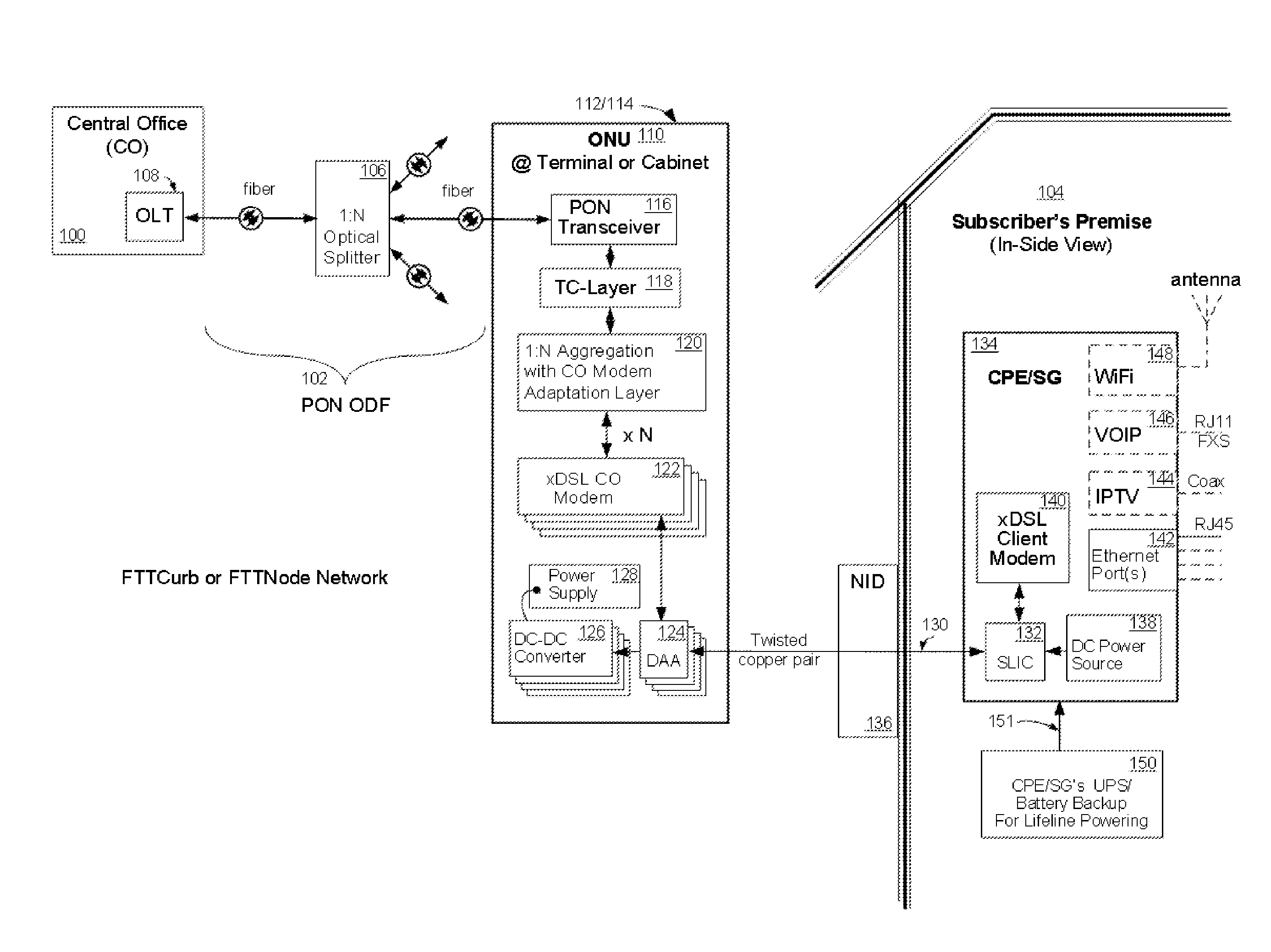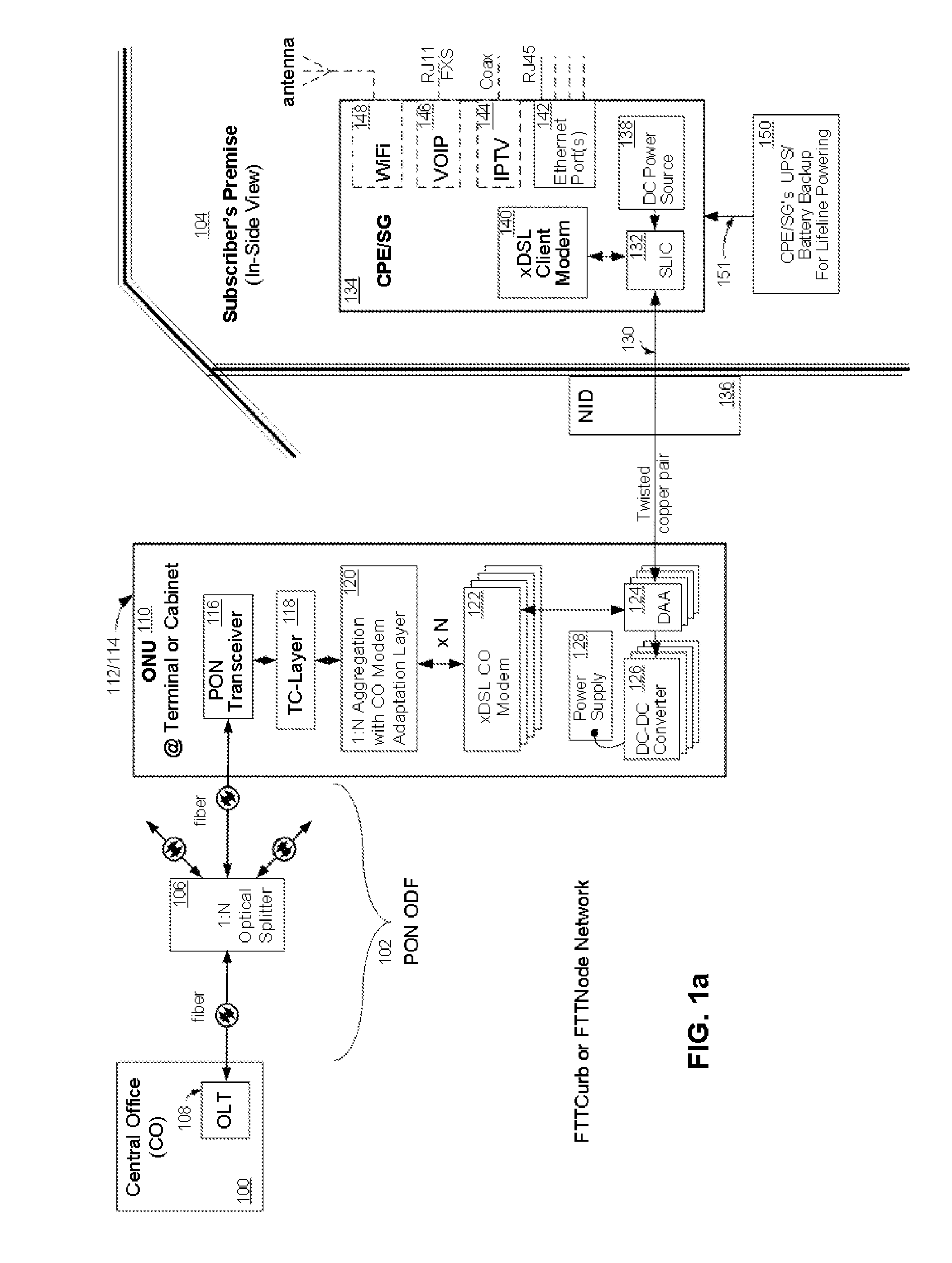System and method for a subscriber-powered network element
- Summary
- Abstract
- Description
- Claims
- Application Information
AI Technical Summary
Benefits of technology
Problems solved by technology
Method used
Image
Examples
Embodiment Construction
[0037]Referring now to FIG. 1a, wherein like reference numerals designate identical or corresponding parts throughout the several views and embodiments and wherein cascading boxes below a part designates a plurality of such parts, an exemplary embodiments of an electrical power architecture for a fiber optic communication network is shown incorporating a subscriber-powered network element, according to the present invention. A FTTC or FTTN network using a PON connects a central office (CO) 100 at the head end of a passive optical distribution fabric (ODF) 102 to a subscriber premise 104. The subscriber premise 104 can be residential homes and / or commercial buildings. The passive ODF 102 is comprised of a plurality of passive optical splitters 106 and connectors (not shown). An Optical Line Terminal (OLT) 108, which is located at the CO 100, acts as a central transmission point and an overall controlling device for the network. The OLT 108 is in communication through the ODF 102 with...
PUM
 Login to View More
Login to View More Abstract
Description
Claims
Application Information
 Login to View More
Login to View More - R&D
- Intellectual Property
- Life Sciences
- Materials
- Tech Scout
- Unparalleled Data Quality
- Higher Quality Content
- 60% Fewer Hallucinations
Browse by: Latest US Patents, China's latest patents, Technical Efficacy Thesaurus, Application Domain, Technology Topic, Popular Technical Reports.
© 2025 PatSnap. All rights reserved.Legal|Privacy policy|Modern Slavery Act Transparency Statement|Sitemap|About US| Contact US: help@patsnap.com



